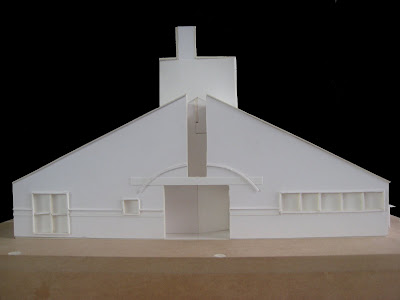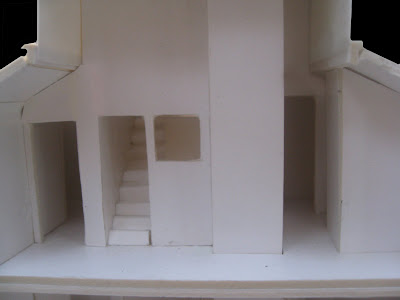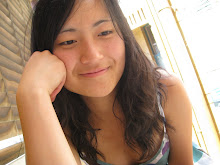 Viewers are inevitably drawn to the painting due to their desire to understand the girl's emotional response towards the letter - however by purposely maintaining it as a secret, it enhances the mystery and allure of Vermeer's work. Thus while the central placement of the girl and intense atmosphere of stillness captures our curiosity, her expression is kept unreadable in both her reflection and figure.
Viewers are inevitably drawn to the painting due to their desire to understand the girl's emotional response towards the letter - however by purposely maintaining it as a secret, it enhances the mystery and allure of Vermeer's work. Thus while the central placement of the girl and intense atmosphere of stillness captures our curiosity, her expression is kept unreadable in both her reflection and figure. We desire to delve into her thoughts because her firm hold on the paper reveals deep concentration. Her absolute separation from reality is then suggested by the heaped tablecloth and fallen plate of fruit - she hastily set aside her work so as to focus on the letter. This same haste is suggested by the placement of the curtain over the window; its unstable heap which threatens to fall, suggests the girl was only interested in achieving light to read the letter contents.
Thus the entire presence of the window and beautiful natural light which floods inside, are downplayed to emphasis her Internalisation. Bottom windows are rarely open in Dutch settings and would have granted magnificent outside views. However despite this privelage where the light embraces her figure and illuminates the wall, she remains absorbed in her letter.
The space feels distinctively feminine due to the soft, flowing texture of fabric which frames the painting, and prominent crimson colours. Furthermore through the use of the same tablecloth in Vermeer's painting 'A Girl Asleep', the painting arouses speculation that the girl's strong response to the letter could be due to young female love. This is what i felt was suggested in ‘A Girl Asleep’; with the door left ajar, the table set and the female sleeping on an upright arm, she would have fallen asleep reluctantly as otherwise she was waiting for the return of someone important to her. For me, 'waiting' communicates a sense of longing for human companionship, where space feels 'empty' until their return. Thus the space in 'A Girl reading a Letter by an Open Window' also feels stifled, as the girl's anticipation over someone valuable to her, freezes the moment for the viewer.
Our appreciation at being included in the moment is enhanced through the theatrical technique shared by many Dutch painters - the use of a curtain. In the painting, its placement to the side of the foreground suggests we are granted a rare and precious insight into a highly personal and secretive moment. This is supported by how the top windows are blocked out; as I believe they are symbolic of the presence of higher beings, their exclusion reinforces the privelage we have in viewing the situation.













